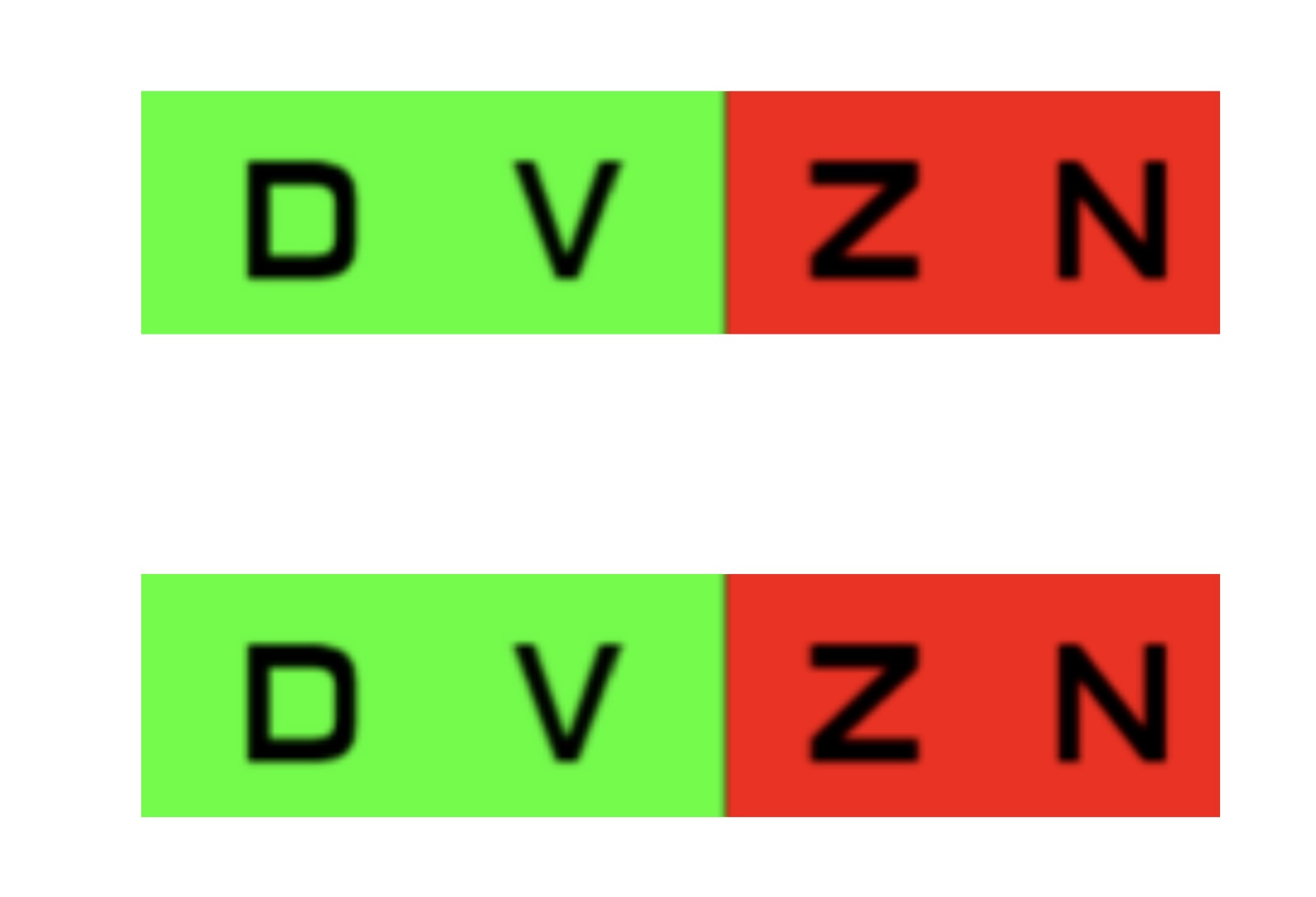The prism dissociation and alternate occlusion test are only used when both eyes have similar monocular visual acuity. If monocular corrected visual acuity is not the same for both eyes, the bichrome prism dissociated method is used.
Procedure of bichrome binocular balancing
- Also known as prism dissociated red-green balance technique.
- The target of the patient is one line above better than corrected visual acuity in the worst eye, letters on a green and red background.
- Both eyes fogged using +0.25 DS steps until the patient reports that letters on a red background are clearer and sharper compared to letters on a green background.
- Images of two eyes are separated from each by using vertical prisms (commonly 3 prism diopter base down in front of the right eye and 3 prism diopter base up in front of the left eye)
- Ask the subject to look at the top line. Ask the patient letters on which background is clearer and sharper compared to other background. As we fogged the patient’s eye earlier expected response is the letter on the red background is clearer.
- Start defogging the right eye of the patient in the 0.25 DS step either by adding -0.25 DS or by removing +0.25 DS, until the patient’s response is a letter on both backgrounds is equally clearer and sharper.
- Repeat the same procedure for the left eye or lower image.
- Then remove the vertical prism. Fog both eyes using a +1.00 DS lens and then start defogging both eyes simultaneously in 0.25 DS until maximum binocular visual acuity is achieved.
Lecturer (Nethradhama School of Optometry)
Moptom

